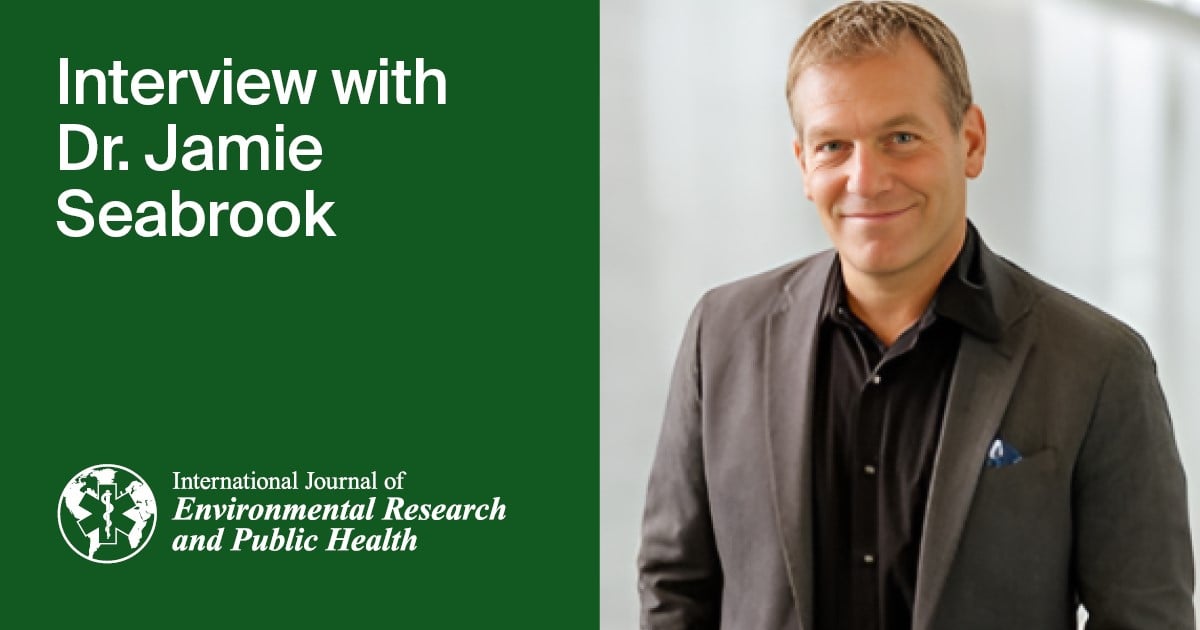Need Help?
9 July 2025
International Journal of Environmental Research and Public Health | Interview with the Author—Dr. Jamie Seabrook

Name: Dr. Jamie Seabrook
Affiliations: 1 Department of Epidemiology & Biostatistics, Western University, London, ON N6G 2M1, Canada; 2 Department of Paediatrics, Western University, London, ON N6A 5W9, Canada; 3 Brescia School of Food and Nutritional Sciences, Western University, London, ON N6G 2V4, Canada; 4 Children’s Health Research Institute, London, ON N6C 2V5, Canada; 5 Lawson Research Institute, London, ON N6A 4V2, Canada; 6 London Health Sciences Centre Research Institute, London, ON N6A 5W9, Canada; 7 Human Environments Analysis Laboratory, Western University, London, ON N6A 3K7, Canada
Interests: social determinants of health disparities; youth substance use and mental health; perinatal epidemiology; child health; nutritional epidemiology.
“Cannabis Hyperemesis Syndrome in Youth: Clinical Insights and Public Health Implications”
by Jamie A. Seabrook, Morgan Seabrook and Jason A. Gilliland
Int. J. Environ. Res. Public Health 2025, 22(4), 633; https://doi.org/10.3390/ijerph22040633
The following is an interview with Dr. Jamie Seabrook:
1. Congratulations on your recent publication! Could you briefly introduce yourself and your current research focus?
I'm a Professor in the Department of Epidemiology and Biostatistics at Western University, with cross-appointments in the Department of Paediatrics and the Brescia School of Food and Nutritional Sciences. Most of my research is geared towards child health disparities, with a huge focus on substance use and youth.
2. Was there a key moment or case study that made you explicitly commit to bridging epidemiology and social theory?
Yes, a defining moment for me came during my earlier work exploring how socioeconomic disadvantage accumulates across the life course to shape health outcomes. What became clear through that research was that social conditions—especially early in life—can set in motion trajectories of stress, limited access to resources, and poorer health that compound over time. That paper really pushed me to think beyond individual behaviors and toward the structural and contextual forces shaping health. From there, bridging epidemiology with life course sociology felt essential. Now, in my current work on youth substance use and the environmental factors—like the density of cannabis retailers—it’s that same lens of cumulative disadvantage and structural context that drives the questions I ask.
3. If you were granted unlimited resources, what underexplored determinant of your research field would you prioritize investigating and why?
One of the key points I tried to highlight in this paper is that the majority of existing research on cannabis hyperemesis syndrome is low-quality. When you look at most of the studies, the vast majority are case reports or case series. What we really need are longitudinal studies to assess the prevalence and risk factors associated with cannabis hyperemesis syndrome. Ideally, with sufficient resources, we could also conduct randomized control trials to identify effective treatments for youth.
4. Reflecting on your academic journey, what misconceptions about health disparities would you hope to dismantle for the next generation of researchers?
That’s a good question. Unfortunately, a lot of grant funding is geared towards lifestyle behavioral changes, and I think that's important, like the way we eat, the way we exercise, or the lack thereof, is all very, very important. But when you tell people, “Eat better, exercise more, don't use any substances”, and so on, it can come across as finger-pointing, and I think what we really need to do is address where people are at. So, for example, for people who are living in poverty, it's easy to say, “eat this way”. But when food prices, for example, are extremely high, they have to do what they can within their budget. I believe in meeting people where they're at and saying “OK, maybe you're currently using substances. Let's see what happens if you're able to reduce from this level down to this level and also make small incremental changes in other areas”, whether it's activity, whether it's diet, whether it's sleep, all of these are interconnected. I hope the next generation of researchers could look more at the context that people are in rather than just the broader picture.
5. As a senior author of IJERPH, could you share your experience of publishing in the journal? In addition, do you think IJERPH plays a unique platform role in promoting interdisciplinary integration and knowledge dissemination?
Yes, absolutely. I had published with IJERPH before as a co-author, and I thought, given the importance in terms of public health in our study of cannabis hyperemesis syndrome, it would be an ideal platform because it's a very important public health issue with relation to cannabis and youth and mental health, and I was very happy with the process of IJERPH in terms of getting the reviews and getting it back to me in an ample time. The reviews weren't easy, but I appreciated them, because they ultimately helped shape a much stronger final paper.

